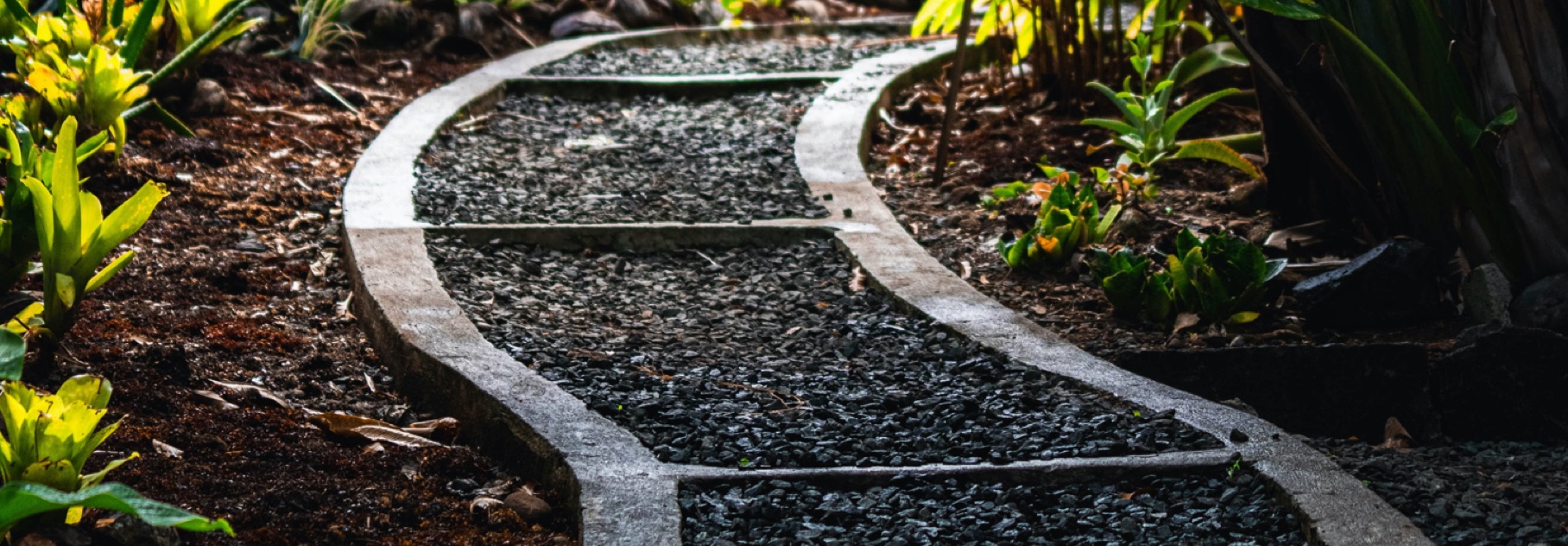- No products in the basket.

Frequenty Asked Questions
Product Care
Yes, turf can be laid all year round, although its growth is dependent upon certain factors. Whenever turf is laid, it must stay damp until it has rooted into the soil below (usually allow 2 weeks) During the summer months, turf must be laid immediately, and must be watered within half an hour of installation and then twice daily, both early morning and late evening for approximately one hour. Turf laid during the winter is slower to establish, as ground temperature drops and frosts arrive, therefore you will have to wait longer before you can use your new lawn.
Please refer to the Turf Growers Association for help on this issue:
Benefits of turf to the environment
The turf we supply is grown to the following Turf Growers Association standards:
1.1 To be grown by a member of the Turfgrass Growers Association (TGA), supplied to the TGA Standard for Cultivated Turf.
1.2 Typical seed mixture used in turf for general landscaping: 20-40% dwarf perennial ryegrass 30-50% slender creeping red fescue 10-25% chewings fescue 10-30% smooth-talked meadowgrass Cultivars of the above species should be chosen from the current STRI Turfgrass Seed booklet. Specifications subject to change.
1.3 Soil type: the soil in which the turf was grown should match as closely as possible the soil on which it will be laid.
1.4 Turf size: turf shall be supplied in either small rolls or big rolls. Small rolls will be 600mm wide and 1.65m long – total area 1m2. Big rolls can be supplied in a variety of sizes, to be agreed in advance.
1.5 General health of turf: the sward must be green and must not be visibly affected by any pest or disease.
1.6 Cutting height: the height of the sward when harvested should not exceed 35mm.
1.7 Thickness of thatch or fibre: the thickness of uncompressed thatch should be between 5 and 15mm.
1.8 Thickness of soil: the soil layer beneath the thatch should be between 5 and 15mm deep.
Please refer to the Turf Growers Association guide on this issue:
In general, grass grows better in full light than in shade. Adjust the height of your mower so that the grass is longer in the shady area of the lawn. This enables the extra leaf to trap as much light as it can. In this case, we recommend using Endurance turf, our specially developed drought-tolerant turf. This grows much better in the shade and can withstand dry conditions. Endurance turf has a very deep root system, and when managed correctly, can hold its vibrant green colour better than any other type of grass. This is important because shady areas are often dry too. However please be aware that areas of low sunlight and poor drainage can still cause even the hardiest of turf to perish,
- At least 100mm topsoil is required for healthy growth of grass. Where there is no subsoil, at least 300m2 of topsoil is required.
- Supply and spread pre-turfing fertiliser over area to be turfed.
- Lightly cultivate, harrow and rake topsoil into a fine tilth suitable for final grading.
- Remove all extraneous material including all debris and perennial weeds, and all surface stones in excess of 35mm.
- Rake to a true, even, consolidated surface. To avoid compaction do not work with wet soil.
- Start laying the turf along a straight side, butting the ends closely together.On subsequent rows, stagger the joints like brickwork, making sure that there are no gaps.
- If you need to adjust the position of the turf after unrolling, always push it rather than pulling it to avoid stretching.
- Work from planks laid on the newly laid turf to avoid making footprints.
- Make sure that there is complete contact between the underside of the turf and the topsoil. If necessary, tamp or roll the turf lightly as you go along.
- Try not to leave any gaps between the turfs, but if they do occur they should be filled with topsoil and lightly firmed
- Water immediately after laying.
- The first watering should ensure that the soil is damp to a depth of 100mm. Keep the turf, and the soil under it, damp – you can check this by turning up a corner of the turf.
- Do not over-water the turf. Over-watering will create boggy conditions and promote grass diseases.
- In the days following, water only in the morning and early evening.
- Water less and less frequently over the first 28 days. The turf should never be allowed to dry out and go brown in this period.
The Turf Growers Association offers a great guide to aid you with this important part of lawn maintenance
An application of Pre-Turf Fertiliser will help speed up establishment of your new lawn and is highly recommended. Like most plants, you will get better results from your lawn if you feed it.
To give your new lawn the best possible start use fertiliser sparingly over the prepared ground, lightly rake it in, lay your turf on top and water it. Only use the correct quantity as per the instructions on the box. Do be careful as too much fertiliser can damage grass.
Specific seasonal fertiliser is available to have delivered with your fresh turf orders or collect from our depots.
Please refer to the Turf Growers Association guide on this issue:
Please refer to the Turf Growers Association guide on this issue:
Brown or orange patches in your lawn?
Please refer to the Turf Growers Association guide on this issue:
Please refer to the Turf Growers Association guide on this issue:
Insects in your lawn?
Please refer to the Turf Growers Association guide on this issue:
New roots usually begin to appear on the underside of your turf within a few days after laying. To check just pick up a corner of the turf, if the roots have anchored then you can try walking on the lawn. This will normally be fully anchored after 2-3 weeks. However, if you have had to water the turf heavily you may find that the soil is rather soft. Before walking across your lawn carefully test that the lawn is firm enough to take your weight.
It is advisable not to cut your new lawn until the turf has properly rooted. This can be checked easily by lifting a corner to see if the roots are attached to the soil below. For the first few mowing’s, set the lawnmower to its highest setting, removing no more than one third of the length of the grass blade. When the lawn is fully established, the height of cut can be reduced gradually to an optimum height of between 15-35mm.
Delivery Information
Town & Country prides itself on its delivery service. We are confident we can deliver locally to the most challenging addresses.
For large orders predominantly turf we operate flatbed trucks with forklifts this allows us to deliver anywhere on your property (mini opening of 2.6m/8’6’’ required).
We also locally deliver turf, soil and aggregates via our smaller more flexible fleet of flatbed tipper trucks. These require us to handball the turf to a location and any soils or stones would be neatly tipped to an accessible location on the property.
From time to time we may utilise our pallet service partners to delivery product outside of our standard delivery areas. These would be delivered via small-medium articulated lorries using a pump truck and tail lift offload.
We can only offer delivery Mon-Fri. We aim to deliver within 2-3 days of you placing your order and on the day you specify. In the height of the season March to May this can be up to 4-5 days.
We cannot deliver on Saturdays or Sundays.
Please tell us the position of your house along your road if it only has a house name (e.g. third house on left after the bridge).
Also give us as much guidance on any restrictions that we may face. Do you live on a small lane? Where can our 10m/32’10’’ long lorry park to unload?
Before placing your order consider any obstacles (e.g. overhanging branches) or steep/uneven ground we may face. Also the position and visibility of manhole covers as we will need sufficient room to steer around them. The delivery information you give us is crucial to a successful delivery.
Unfortunately we are unable to provide forklift unload in every part of the Southeast. We can offer you delivery on pallets by a lorry with hydraulic tail-lift offload. For this type of delivery you will need a firm level surface to unload on. You must ensure that the delivery vehicle will have clear access to the unloading area. Pallets are normally dropped off at the kerb side. Where possible the driver will try and leave your delivery where requested.
Drivers use small pump action trolleys to manoeuvre pallets around therefore it is key that the surface is level. Trolleys are designed to be used on surfaces like tarmac or block paving and NOT on uneven or loose ground like gravel or earth. Please be aware that with this type of delivery cannot be delivered onto any form of slope or incline.
Unfortunately due to the nature of our products and the variability of delivery locations we are unable to guarantee any delivery times.
If you require your products to be delivered in the morning where ever possible we recommend that you ask us to deliver the day before you require the materials.
Any delivery times given are only estimate’s and given in good faith with information available at the time.
Our delivery vehicles are fitted with real time trackers to assist with delivery updates.
We are happy to deliver without you being present. However we do not accept any liability for theft or damage of items delivered. Also it is at the driver’s discretion whether he deems it safe to deliver where you have stated it should be placed. Finally we will not return to move items if they are deemed to be left in the wrong place.
Due to its perishable nature the best advice we can give is to start laying your turf as soon as possible after delivery, ideally within 12-24 hours. The faster you start laying, the better the results will be. Make sure you get all your preparation work done well beforehand. If you have to delay then we suggest you store the turf in a well-ventilated shaded area spliting the pallet down to allow air circulations.
The best course of action you can take is to roll out each turf and water. However do not re-roll turf after this as this can cause ‘sweating’, Then lay as soon as possible.
Other
Our turf comes in rolls measuring 1.64m x 0.61m ( 64.5″ x 24″) giving an area of 1m2. Each roll weighs approx. 15-18 kg, dependant on the level of moisture.
Unfortunately we are unable to guarantee to collect used pallets, Please contact us directly and we will do our best to collect when we are next in the area.
We will accept pallet returns at either of our depots, however these must be our own pallets. We will not accept any pallets that are not our own.
